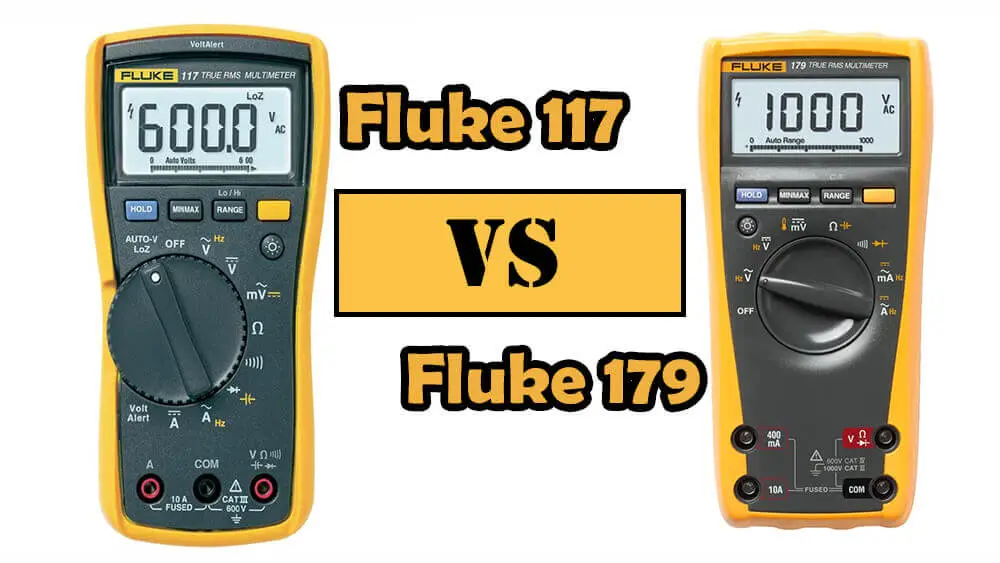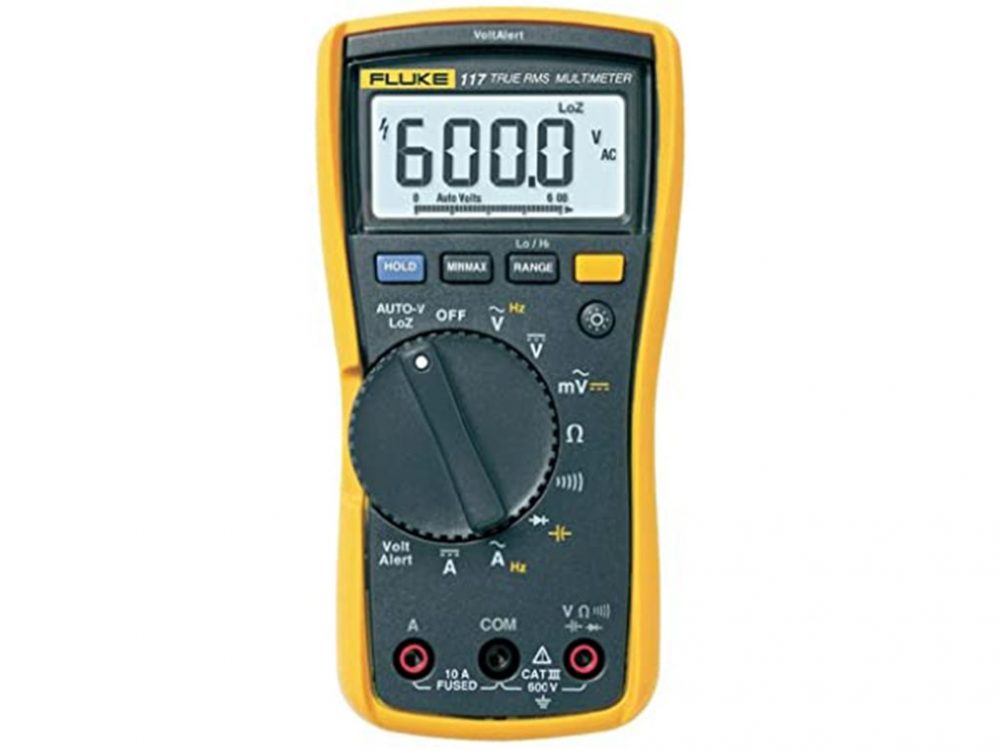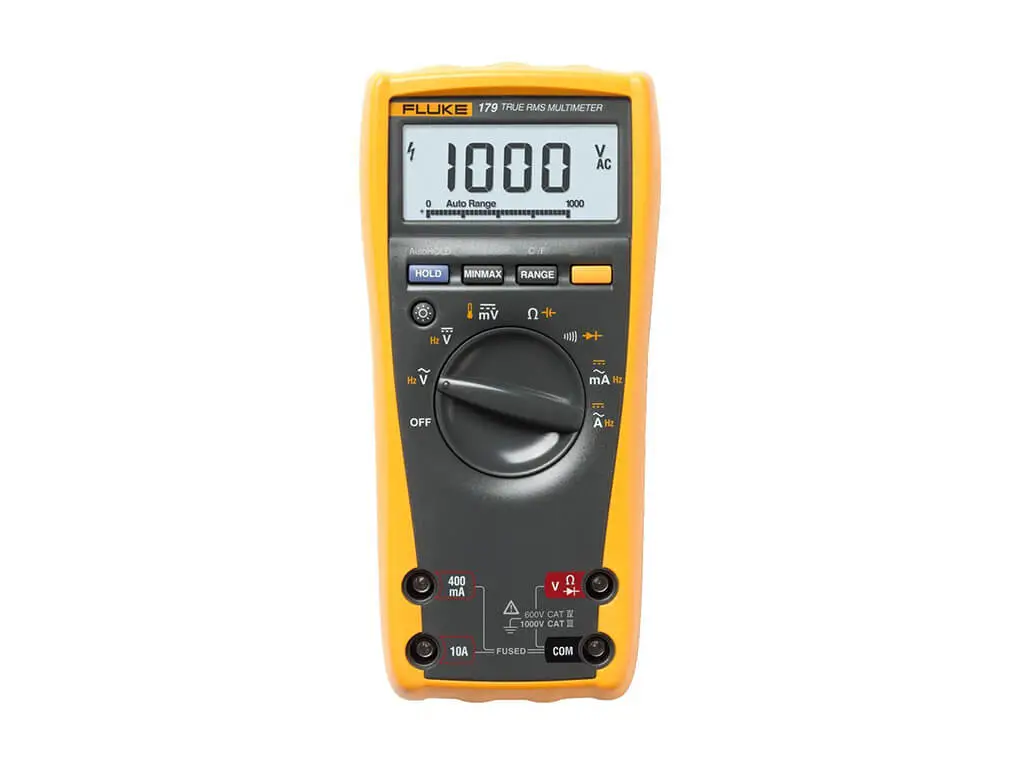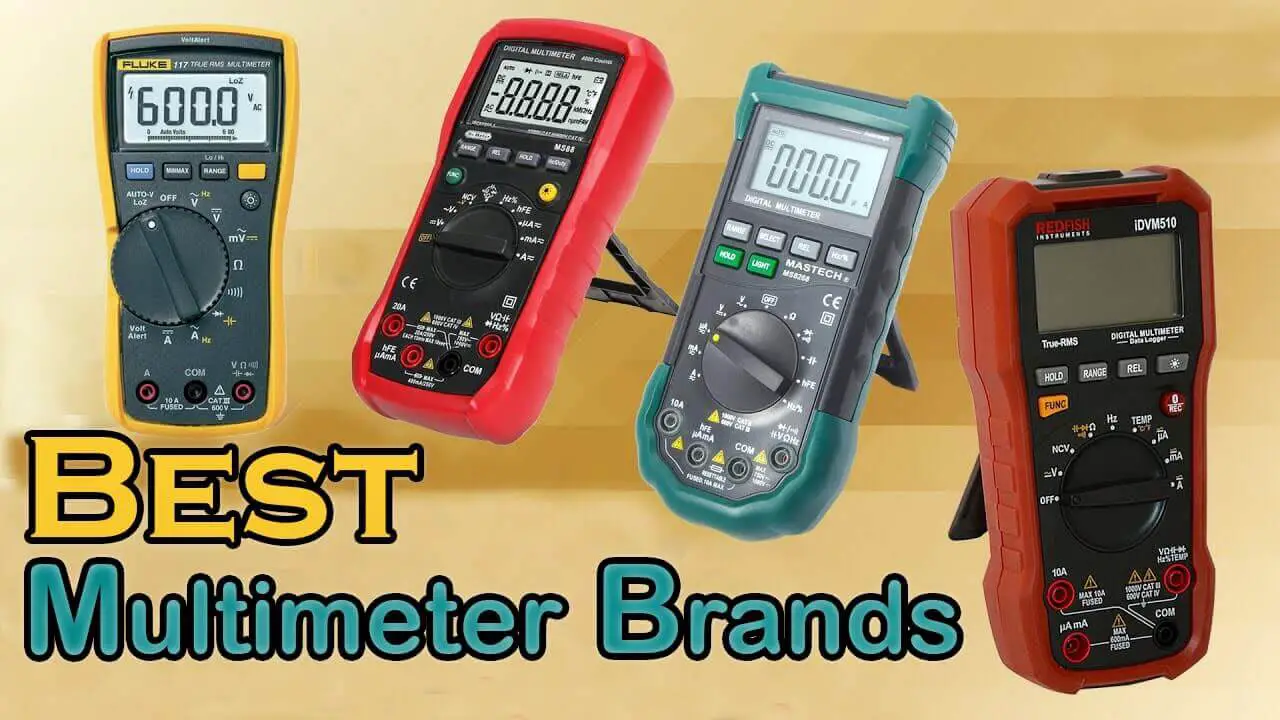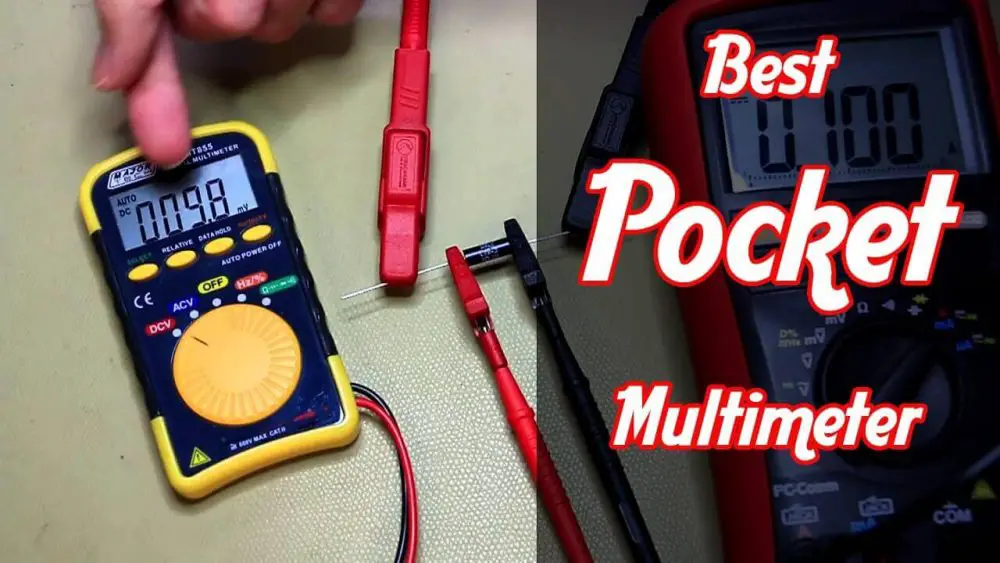Fluke 117 vs 179 Multimeter Comparison Guide 2022
A multimeter is a useful tool for electricians, hobbyists, and anybody else who works with electrical circuits. There are a few things to think about while choosing a multimeter. The first is the meter’s kind. There are two types of meters: digital and analog. The analog meter is less expensive and more difficult to read, whereas the digital meter is more accurate and easier to read. The voltage range that the meter will measure is the next factor to consider. If you’re looking for a reliable brand multimeter, look no further than the Fluke brand. Since 1948, they’ve been producing multimeters and have established themselves as a market leader. When you buy a Fluke multimeter, you know you’re receiving a product that’s been precision-engineered to produce precise results.
When it comes to buying a Fluke digital multimeter, you still have a lot of options. Two of the most popular tool options are the Fluke 117 and 179. In this post, these digital multimeters will be discussed.
9.5
- Safety rating of CAT III 600 Volt
- Non-Contact Voltage Detection & LoZ
- AutoVolt automatic AC/DC voltage selection
- Dimensions: 6.57 x 3.31 x 1.81 inches
- Weight: 1.21 pounds
9.7
- Current AC/DC Max 10A
- Built-in thermometer
- Safety rating CAT IV 600V and CAT III 1000V
- Built-in thermometer
- Dimensions: 7.28 x 3.54 x 1.69 inches
- Weight: 0.925 Pounds
What are the main similarities between fluke 117 vs 179?
1. True RMS (Root Mean Square):
The Fluke 117 and 179 digital multimeters are both true RMS multimeters. This means they can accurately measure the voltage and current of nonlinear signals. Nonlinear signals are found in many electronic devices, thus a proper measurement of them is critical for multimeters. The Fluke 117 and 179 are both capable of this, making them excellent for use in electronics repair and troubleshooting.
2. Auto OR Manual Ranging multimeter:
The Fluke 117 and 179 auto-ranging multimeters do not require the operator to move a knob to achieve an accurate result. This is useful for newbies who may not know how to use a multimeter. The auto-ranging system reduces the possibility of the user making a mistake and receiving an inaccurate reading.
3. Carrying Case:
There is no carrying case included with the Fluke 117 and 179 digital multimeters. A carrying case, on the other hand, can be purchased separately. To protect the meter, the carrying case has a hard exterior and a padded interior. For ease, the carrying case includes a belt clip and a shoulder strap.
4. Measurements:
The digital multimeters Fluke 117 and 179 measure AC/DC voltage, current, resistance, and capacitance. Temperature, frequency, or also fluke 179 can measure temperature, frequency, and DC millivolts. Both meters are built to last and are extremely accurate. The 117 is ideal for general-purpose applications, while the 179 is ideal for more complex jobs.
What are the main differences between Fluke 117 vs 179?
1. Non-Contact Voltage Detection & LoZ:
Edge: Fluke 117
In terms of non-contact voltage and LoZ functionality, which help in identifying behind-the-wall voltages and stray voltage filtering to obtain improved accuracy, the Fluke 117 is a better option. Fluke 179 is weak in both of these aspects.
2. Safety Ratings:
Edge: Fluke 179
The fluke 117 is CAT III rated, whereas the fluke 179 is CAT III and CAT IV rated, making the fluke 179 more trustworthy. The 117 has a CAT III rating, which means it may be used in general household applications, and the 179 has a CAT IV rating, which means it can be used in industries. The fluke 117 is suitable for basic electrical work, but the fluke 179 is appropriate for more demanding or dangerous electrical work.
3. Temperature:
Edge: Fluke 179
The Fluke 179’s 80BK temperature probe is a unique feature that helps in quick and accurate temperature measurement. You won’t have to worry about the precision of your measurements with this probe. The Fluke 177 lacks this feature, so if you need a quick and accurate means to monitor temperatures, the Fluke 179 is the best choice.
4. Battery:
Edge: Fluke 179
The Fluke 117 multimeter is powered by three AAA batteries, but the Fluke 179 is powered by a single 9V battery. Because AAA batteries have a shorter lifespan than 9V batteries, the Fluke 179 multimeter has a longer lifespan.
5. Weight:
Edge: Fluke 179
The Fluke 117 multimeter weight is somewhat more than the Fluke 179 multimeter. The Fluke 117 weighs 1.21 pounds, whereas the Fluke 179 weighs 0.925 pounds. In this regard, the Fluke 117 multimeter weighs slightly more than the Fluke 179 multimeter.
6. Warranty:
Edge: Fluke 179
The Fluke 179 digital multimeter comes with a lifetime warranty, which is a big selling factor for this equipment. The Fluke 117’s three-year guarantee is good, but it doesn’t compare to the lifetime warranty of Fluke 179. This difference is most likely the reason why the Fluke 179 is more expensive than the Fluke 117.
Fluke 117 Electricians True RMS Multimeter
The Fluke 117 also has auto-ranging and True RMS measurements, making it suitable for both professionals and beginners. It’s simple to ensure your job is done safely and efficiently with VoltAlert technology for non-contact voltage detection and AutoVolt automatic AC/DC voltage selection, as well as a low input impedance to prevent false readings. This digital multimeter measures frequency and capacitance and provides Min/Max/Average measurements. The Fluke 117 digital multimeter has a safety rating of CAT III 600 V and can measure resistance, continuity, frequency, and capacitance. The meter has a big backlit display that is simple to read even in low light circumstances.
Pros
- It has AutoVolt, which allows for quick AC/DC voltage selection.
- Included VoltAlert technology for non-contact voltage detection
- Affordable pricing
Cons
- Doesn’t have a built-in thermometer.
- No CAT IV rating
Fluke 179 True RMS Digital Multimeter
The Fluke 179 is an excellent tool for testing and troubleshooting a wide variety of electrical equipment in industrial settings. Because this meter is CAT IV 600V rated, it can be utilized in even the most hazardous electrical circumstances. With a CAT III 1000V rating, the Fluke 179 can also withstand more powerful surges and spikes. A maximum AC/DC voltage of 1000 volts and a maximum AC/DC current of 10 amps can also be measured. The True-RMS frequency counter ensures accuracy when measuring low and high frequencies, frequencies ranging from 0.01 Hz to 100 kHz, and has a capacitance range of 1 nF to 10,000 uF. It can also maintain a temperature ranging from -40 to 752 degrees Fahrenheit, making it appropriate for a wide range of applications.
Pros
- Come with a built-in thermometer.
- It has a reliable diode testing system
- Temperature probe
- Excellent safety ratings
Cons
- It is a little bit more expensive.
- Manually zeroing the leads is required.
Frequently Asked Questions:
The Fluke 117 is an excellent choice for a high-quality multimeter that can handle a wide
range of troubleshooting and general electrical tasks. It has all of the functionality you require
to do the task.
The Fluke 179 is a better option if you’re searching for something specifically intended for industrial HVAC testing. It contains additional capabilities such as min/max recording and temperature measurement, making it appropriate for use in more specialized features.
The Fluke 117 digital multimeter is a great tool for many purposes, but it does not include the ability to measure temperature.
The Fluke 179 is designed and manufactured in the United States. The bulk of Flukes is manufactured in the United States, although with the introduction of various low-cost models, some production has shifted to China. Fluke is a trusted brand and its products are known for their quality and durability.
The Fluke 117 multimeter is covered by a three-year warranty, whereas the Fluke 179 multimeter is covered by a lifetime warranty. The Fluke 117 multimeter is intended for general-purpose electrical measurements, whereas the Fluke 179 multimeter is intended for more complex electrical measurements for industrial HVAC testing.
When it comes to multimeters, Fluke is the brand to go with. They are among the most sensitive on the market, responding quickly and accurately to even the slightest fluctuations in current or voltage. With a Fluke meter, you can be sure that you’re getting an accurate reading every time.
Conclusion:
The Fluke 117 is difficult to beat when it comes to selecting the ideal equipment for home inspections and general-purpose tasks. It’s simple to apply, long-lasting, and inexpensive, making it an excellent alternative for anyone on a tight budget. The Fluke 179, on the other hand, is a great alternative if you require a tool that can manage HVAC needs as well as simple industrial diagnostics. Despite being more expensive than the Fluke 117, the Fluke 179 is well worth the money for dedicated professionals. Finally, The Fluke 117 is a multipurpose electrical instrument that can be used for a variety of domestic tasks. It is less expensive than the Fluke 179, making it an excellent choice for individuals on a budget. the Fluke 117 is still a realistic choice.
